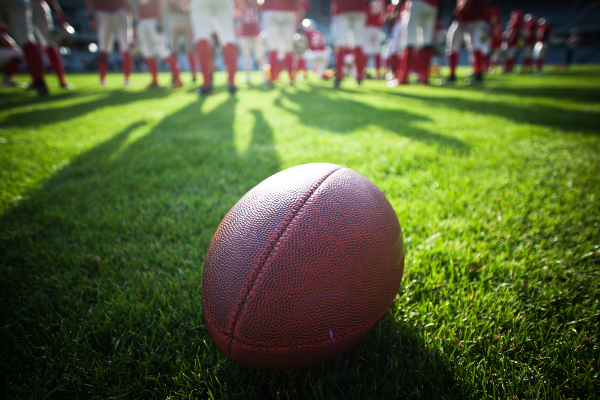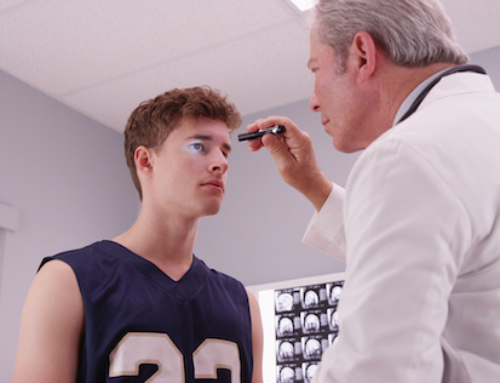There’s no doubt that football is one of America’s most prized pastimes. Super Bowl XLIX in 2015 currently holds the record for the largest average viewership of any live single-network U.S. television broadcast, with 114.4 million viewers. While fans wait patiently for the action to commence, players work tirelessly for five weeks to produce a well-functioning, organized, and prepared NFL team. This period of time, however, is the prime time for injuries that often result in players being forced to undergo surgery and potentially sit out for the entire season. Keep reading to learn more about some of the most common injuries NFL players face during training camp.
1. Concussions
As injury rates are higher during the preseason, a concussion is the most infamous injury suffered by NFL players during training camp. In 2017 alone, the NFL saw 291 concussions between the preseason and regular season practices as well as games. Football is a collision sport, which increases the likelihood of a player’s head being slammed into the turf or another player’s helmet. The results of a concussion can include dizziness, headaches, blurred vision, numbness, and confusion, and concussions should be treated as soon as possible to avoid lasting damage. The long-term brain damage, namely chronic traumatic encephalopathy (CTE), preceded by multiple concussions has been at the center of debate for years in regards to NFL players. On the bright side, the number of diagnosed concussions NFL players suffered in 2018 dropped 29% from the previous year.
2. Ligament/Tendon Injuries
Ligaments and tendons are collectively known as the connective tissues that provide cohesion and internal support for the body. When you hear of a player who sprained their ankle, it means the connective tissue was stretched, causing swelling and discomfort around the joints. Turning specifically to the knee, an anterior cruciate ligament (ACL) tear is typically the worst news a player can receive. It can take up to two years for the ligament to get back to full speed – after surgery and a long rehab period. Shoulder injuries are typically similar, such as a tear of the rotator cuff. This past season, the Eagles’ WR Alshon Jeffery suffered a shoulder strain during training camp, which ultimately led to a rotator cuff tear, requiring surgery after the season’s end.
3. Pulled Muscles/Hamstrings
A pull or strain of the hamstring muscle is quintessential to the category of non-contact injuries. This is a typical consequence of the movements required by football: quick cuts, accelerations, and full-speed sprints that are necessary for the game. Possible symptoms include bruising, tenderness, muscle spasms, or an inability to contract the muscle. Ezekiel Elliott and Vincent Jackson are just a couple of NFL players who have been set back by hamstring injuries in the early preseason. The reason for many hamstring issues may lie in the lack of preparation during lengthy offseasons. The hamstring problems that occur during training camp often recur or lead to other injuries during the regular season.
4. Broken Bones
Many NFL players play through stress fractures, which are small cracks in the bone. However, more severe breaks can cost players their entire season. If a player needs surgery with plates/pins inserted to stabilize the broken bone, they are likely to miss a lot of time on the field. Another factor to consider is whether or not the area of the break is critical to the player’s position. Sometimes, the broken bones can be played through and treatment can be put on hold until a later time. Due to the high-impact nature of the game, broken bones are not uncommon in football.
5. Overuse Injuries
While many of the injuries suffered by NFL players are due to sudden, traumatic impact, overuse injuries result from repetitive, high-intensity activity. Despite the fact that training camp comes at the beginning of the season, prior years of play contribute to the onset of these types of injuries. Issues related to overuse can include back pain, tendonitis in the knee, and fatigue from overtraining. Overuse injuries can be hard to treat, considering the fact that players rely on consistency to drive their success on the field. The best way to ease the pain of these injuries is to routinely stretch, ice the affected area, and focus on using the correct form when performing movements.
Sports Injury Treatment Near You in Illinois
Don’t let an early injury bring your football season to an end before it has even started. Dr. Roger Chams has extensive Sports Medicine experience, including treating thousands of professional, NCAA, and amateur athletes. With four different office locations across Illinois, Dr. Chams will work with you to establish a treatment plan to meet your specific needs, whether you are facing an orthopedic shoulder or knee injury. To learn more about Dr. Chams’ specialties and to make your appointment, please contact us today!






